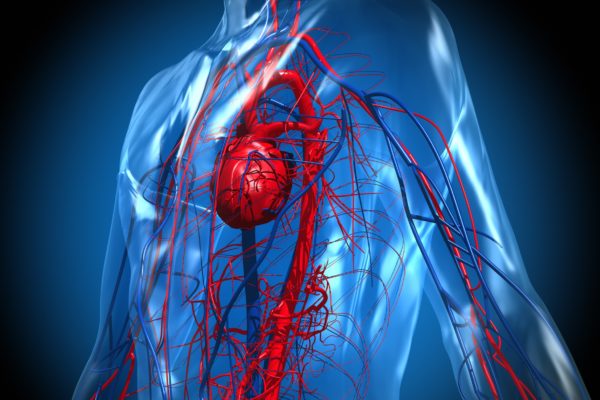Clinical picture
Stomach cancer begins when cancer cells are forming in the inner lining of your stomach. These cells can grow into a tumour. Also called gastric cancer, the disease usually grows slowly over many years. Stomach cancer is one of the most widespread cancer types in the world.
The stomach plays a pivotal role in the digestive tract. The inside of the stomach is covered in a mucous membrane that contains glands that produce digestive acid that helps to dissolve food and extract nutrients. The acid also kills off bacteria that have been ingested with food. The outer layer of the stomach is a muscle that contracts and dilates in order to mix the food with the digestive acid.
There are several types of stomach cancer:
- Adenocarcinoma: this is by far the most common type of stomach cancer, where tumours develop in the lining of the stomach. Oncologists recognise two sub-types:
- intestinal adenocarcinoma: tumorous cells follow a normal growth pattern and look and act like stomach cells. This type makes up around 90 to 95% of all adenocarcinomas.
- diffuse adenocarcinoma: this type often causes linitis plastica and is found in deeper layers of the stomach lining. This type is more aggressive and spreads to surrounding organs. These cancers make up 5% of all adenocarcinomas and may be related to a mutation of the CDH1
- Stomach lymphoma: tumours that develop in immune cells of the stomach lining. Around 3 to 5% of stomach cancers are of this rare type.
- Gastro-intestinal tumours (GIST): these tumours develop within the stomach wall itself and make up 1 or 2% of all stomach cancers.
- Neuro-endocrine tumours (NET): these tumours develop in nerve cells or hormone cells and involve fewer than 1% of all stomach cancer patients.
In Belgium, according to data from 2017, stomach cancer is annually diagnosed in 1,399 patients, with 744 deaths per year. It is the 13th most prevalent cancer in Belgium and men are more at risk than women (873 versus 526 new patients), and it most often occurs in patients over the age of 60. Patients who are diagnosed in stage I have a 67% 5-year survival rate. This cliff-ends to less than 1% in patients who are diagnosed in stage IV.
Symptoms
Stomach cancer usually goes unnoticed through its early stages and only becomes apparent when the disease spreads. Patients with stomach cancer can present the following symptoms:
- unexplained weight loss
- stomach pains
- feeling bloated
- frequent burping or acid reflux
- feeling as if food won’t go down
- fatigue
- darker or even black stools
- jaundice
Cause
Scientists don’t know exactly what causes cancer cells to start growing in the stomach. But they do know a few things that can raise your risk for the disease. One of them is infection with a common bacteria, Helicobacter pylori, which causes ulcers. Inflammation in the gut called gastritis, a certain type of long-lasting anaemia called pernicious anaemia, and growths in the stomach called polyps also can make you more likely to get cancer.
Other things that seem to play a role in raising the risk include:
- smoking
- being overweight or obese
- a diet high in smoked, pickled, or salty foods
- stomach surgery for an ulcer
- blood type A
- Epstein-Barr virus infection
- certain genetic conditions such as Lynch syndrome
- working in coal, metal, timber, or rubber industries
- exposure to asbestos
- having had part of the stomach removed
- not producing enough stomach acid (achlorhydria)
Diagnosis
When a GP suspects a patient may have stomach cancer, they will conduct a physical examination and subsequently refer the patient to a specialist for further testing. A gastroscopy will take place in most cases: a nano-camera is inserted through the mouth or nose using a flexible tube. During this examination a biopsy may also be obtained for pathological research.
If a diagnosis of stomach cancer is made, further tests determine the exact stage the cancer is in, depending on its location, its size and whether it has spread or not. CT scans, MRI scans, FDG-PET/CT scans, ultrasound, X-rays and exploratory surgery all stand at the specialist’s disposal.
In order to come up with the best possible treatment plan, it is vital that the exact stage of advancement is determined. For this, the TNM classification system is used. T stands for the state of the primary tumour, N denotes the amount of spreading to the lymph nodes and M stands for metastasis to other organs.
In stomach cancer, the following stages are recognised and defined:
- Stage 0: Restless cells have been discovered in the stomach, this is seen as an early warning sign for cancer.
- Stage I:
- Ia: A tumour develops in the stomach lining or the connective tissue of the stomach.
- Ib: The tumour develops in the stomach lining or the connective tissue of the stomach and has spread to one or two nearby lymph nodes or has penetrated into the muscle layer.
- Stage II:
- A tumour develops in the stomach lining or the connective tissue of the stomach and has spread to 3 to 6 nearby lymph nodes.
- The tumour has penetrated into the muscle and has spread to one or two nearby lymph nodes.
- The tumour grows in the outermost layer of the stomach.
- The tumour develops in the stomach lining or the connective tissue of the stomach and has spread to 7 or more lymph nodes.
- The tumour has penetrated into the muscle and has spread to 3 to 6 nearby lymph nodes.
- The tumour grows in the outermost layer of the stomach and has reached 1 or 2 nearby lymph nodes.
- The tumour has penetrated through the outermost layer of the stomach.
- Stage III:
-
- IIIa:
- The tumour has spread into the muscle tissue and has spread to 7 or more surrounding lymph nodes.
- The tumour grows in the outermost layer of the stomach and has reached 3 to 6 nearby lymph nodes.
- The tumour has penetrated through the outermost layer of the stomach and has reached 1 or 2 nearby lymph nodes.
- IIIb:
- The tumour grows in the outermost layer of the stomach and has reached 7 or more lymph nodes.
- The tumour has penetrated through the outermost layer of the stomach and has reached 1 or 2 nearby lymph nodes.
- The tumour has spread to nearby organs and tissue and may have spread to 1 or 2 lymph nodes.
- IIIc:
- The tumour has penetrated through the outermost layer of the stomach and has reached more than 7 lymph nodes.
- The tumour has spread to nearby organs and tissue and may have spread to 3 or 4 lymph nodes.
- Stage IV: The cancer has spread throughout the body.
Treatment
As soon as the diagnosis has been made and the exact location and stage of the tumour is known, specialists will come up with a treatment plan. Since stomach cancer often only gets detected at a relatively late stage, curing the patient may no longer be an option, in which case a palliative care strategy is put in place. Even with patients who do undergo treatment with the objective of curing the disease, around 40-60% will develop new tumours, in which case treatment switches to a palliative care program.
The following treatments are offered to patients with stomach cancer.
- Surgery: This is only a viable option when the tumour and metastases can be removed in full. It also requires the patient to be in a good general health condition.
- Chemotherapy: This can be administered before and after surgery when the patient’s condition allows for it. The success of chemotherapy very much depends on the exact moment it is administered. Chemotherapy can also play a part in a palliative care strategy.
- Radiation: This can be prescribed in combination with chemotherapy (chemoradiation) after surgery, or as part of a palliative strategy.
- Targeted therapy: This forms part of a palliative strategy and is combined with chemotherapy. Treatment options include VEGF inhibitors, although research into more options are ongoing.
In case the cancer has spread to the peritoneum, HIPEC is an option: Hyperthermic Intra Peritoneal Chemotherapy. In this method, the peritoneum is rinsed with a 40 degree heated chemotherapy.
Additional information
Related articles

Clinical picture

Symptoms

Cause

Diagnosis

Treatment

Patient organisations

Links







